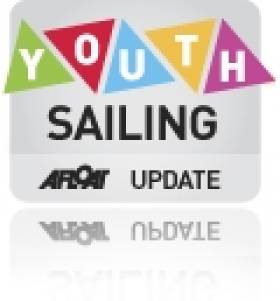Displaying items by tag: Youth Sailing European Championship
NOR Announced For 2013 EUROSAF Youth Sailing Euros
#YouthSailing - The Notice of Race (NOR) for the 2013 EUROSAF Youth Sailing has now been released.
This marks the second occasion on which the combined classes continental championship of Europe has been organised – the first being in Aarhus, Denmark in August this year, hot on the heels of the successful ISAF Youth Worlds in Dublin Bay this summer.
Up to 200 sailors under the age of 19 from as many as 20 European countries will be competing for the accolade of European Youth Champion in Tavira, Portugal from 3-9 August 2013.
Medals will be available in each of eight different disciplines, including an open multihull event using the Sirena SL16 catamaran. Other designs of boats to be used are the Laser Radial, International 420 and 29er skiff. Windsurfing will be represented by the RS:X sailboard, as used at the Olympic Games. Each country is permitted to enter two crews in each of the disciplines.
Uniquely in terms of multi-event youth championships, the EUROSAF Youth Sailing European Championship includes medals races for the top sailors in each discipline.
In a development of the championship since Aarhus, there will also be a final race for competitors who do not qualify for the medal races. The results of these races will count towards the Nations Cup Team Trophy - currently held by Italy - which is awarded to the country with best overall results from the entire series across all disciplines.
Another new feature for 2013 will be an increase in the number of races for each class. This is being introduced as a direct result of recommendations from many of the coaches who were present in 2012.
The tendency these days is to have shorter races, so the athletes were often ashore and finished racing by early to mid-afternoon. In the 2013 event the windsurfers, multihull and skiffs will each have four races scheduled per day, while the single and double-handed classes will have three races scheduled. Racing starts on Monday 5 August and concludes on Friday 9 August.
The EUROSAF Youth Sailing European Championship will be hosted by Clube Náutico de Tavira, in association with the Federação Portuguesa de Vela and the European Sailing Federation. The host club previously organised the Portugal Youth Championship and the 420 Open European Championship, and will be the host of the ISAF Youth Sailing World Championship in 2014.
Tavira is located on the east side of Algarve, some 30km from the International Airport in Faro, and is one of the oldest towns of Algarve.
Marco Predieri, president of EUROSAF, said: "We are delighted to be taking this prestigious event to Portugal and Tavira, after the very successful championship in Denmark in 2012.
"EUROSAF are committed to building this championship into the foremost youth sailing championship in Europe each year, and we are confident that the 2013 hosts will help us move closer to achieving this objective."
The NOR is available to read or download HERE.
























































